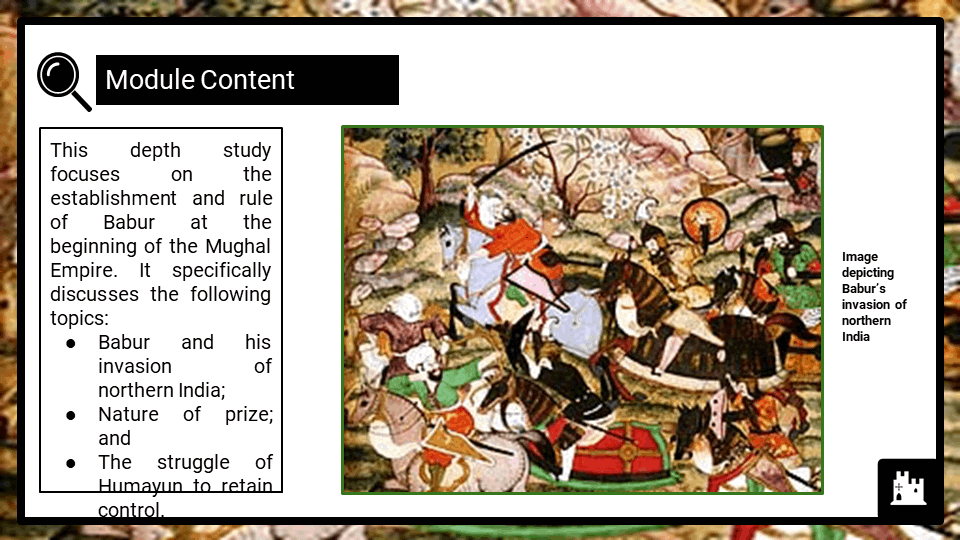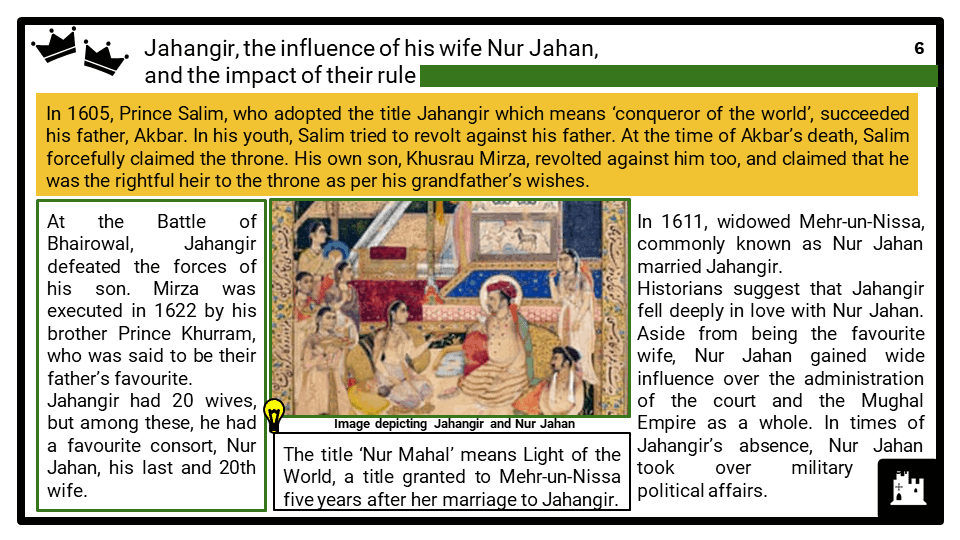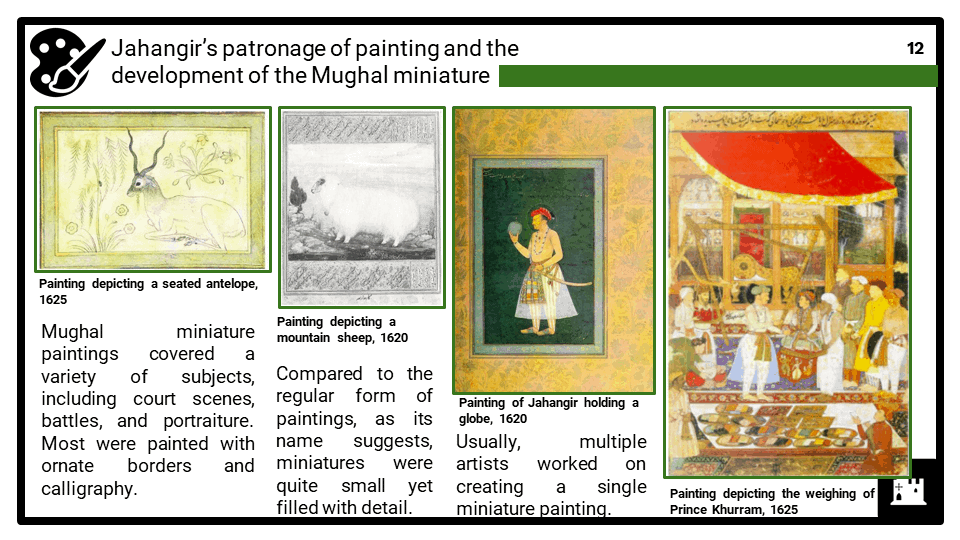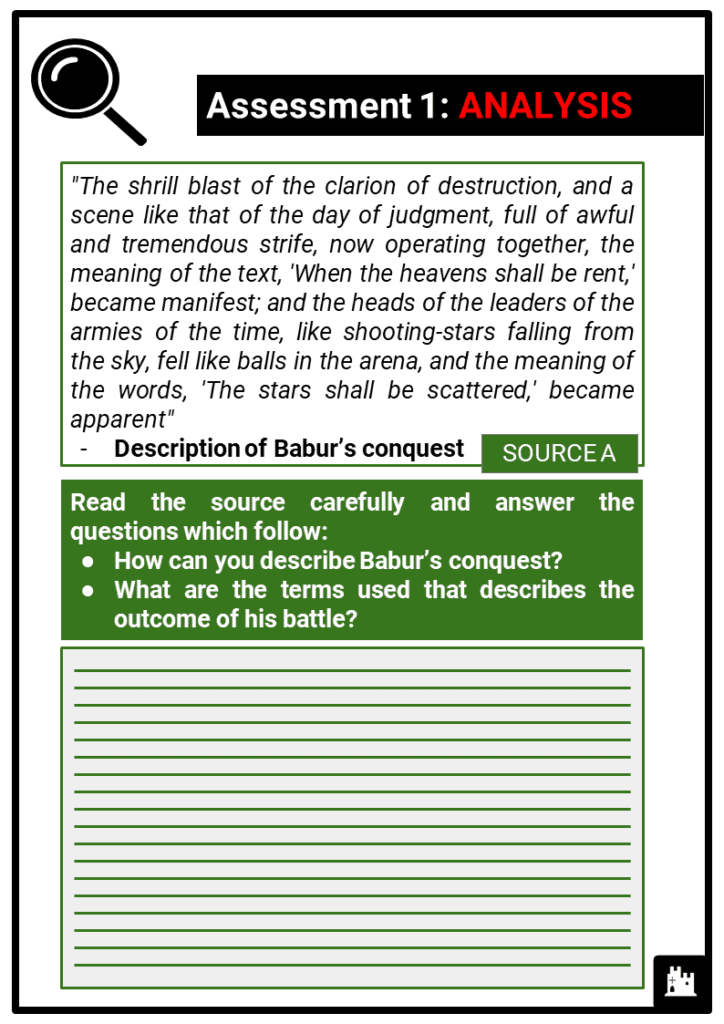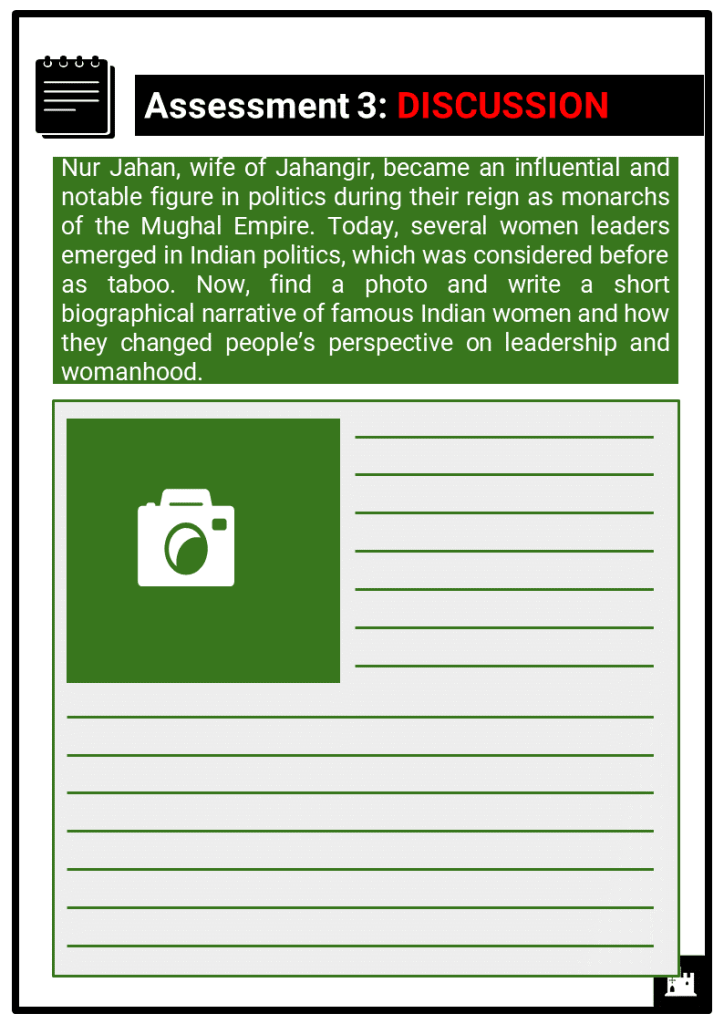Teach any OCR B module : The Mughal Empire, 1526–1707, no prep needed!
Do you want to save dozens of hours in time? Get your evenings and weekends back? Be fully prepared to teach any OCR B GCSE topic?
Every OCR B topic is covered, and each module comes complete with:
The Mughal Empire, 1526–1707
The Mughal Empire, 1526–1707, forms part of Component Three: Period Studies in OCR B History curriculum.
This period study follows the unfolding narrative of Mughal power in India from 1526 to 1707, and in particular, the role of the first six emperors. Learners will need to understand the nature of the Mughal Empire in these years and be able to evaluate the role of the emperors in shaping its development. There are three consistent themes: the extension of the empire’s territory; the rule of the emperors and its impact on the people; the personalities and enthusiasm of the emperors especially in religion, the arts and architecture. Learners should be able to identify, describe and explain events, situations and developments relating to the nature of the empire and the role of the emperors. They should study the unfolding narrative through the five sections outlined below. In each of the sections, the focus should be on the specific content identified.
Themes covered include:
The First Mughal Emperors, 1526–1556
- Babur and his invasion of northern India: the beginning of the Mughal Empire, 1526–1530
- The nature of the prize: northern India and its people c.1530
- Humayun, his struggle to retain control, and the condition of the Mughal Empire by 1556
Akbar, 1556–1605
- Akbar and the extension of the Mughal Empire during his reign, 1556–1605
- Akbar’s court and his imperial administration
- Akbar’s search for knowledge and his religious policies
Jahangir, 1605–1627
- Jangir, the influence of his wife Nur Jahan, and the impact of their rule
- The Mughal economy and European traders
- Jahangir’s patronage of painting and the development of the Mughal miniature
Shah Jahan, 1627–1658
- Shah Jahan, the luxury of his court and the nature of his rule
- Shah Jahan’s patronage of building including the Taj Mahal and his new capital in Delhi
- Shah Jahan’s wars to extend the empire and the war of succession between Dara and Aurangzeb
Aurangzeb 1658–1707
- Aurangzeb and the impact of his religious piety
- Aurangzeb’s campaigns against the Marathas in the Deccan from 1681 and the consequences of these
- The condition of the Mughal Empire at Aurangzeb’s death in 170

